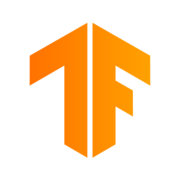Qlik AutoML vs. TensorFlow
Qlik AutoML vs. TensorFlow
| Product | Rating | Most Used By | Product Summary | Starting Price |
|---|---|---|---|---|
 Qlik AutoML | N/A | Qlik AutoML is presented as an automated, no-code machine learning solution that enables users to create ML experiments, identify key drivers in data and train models. And make future predictions with full explainability data, and quickly publish the data or directly integrate models into Qlik Sense® apps for fully interactive analysis and what-if scenario planning. | N/A | |
 TensorFlow | N/A | TensorFlow is an open-source machine learning software library for numerical computation using data flow graphs. It was originally developed by Google. | N/A |
| Qlik AutoML | TensorFlow | |||||||||||||||
|---|---|---|---|---|---|---|---|---|---|---|---|---|---|---|---|---|
| Editions & Modules | No answers on this topic | No answers on this topic | ||||||||||||||
| Offerings |
| |||||||||||||||
| Entry-level Setup Fee | No setup fee | No setup fee | ||||||||||||||
| Additional Details | — | — | ||||||||||||||
| More Pricing Information | ||||||||||||||||
| Qlik AutoML | TensorFlow | |
|---|---|---|
| Top Pros | No answers on this topic | |
| Top Cons | No answers on this topic |
|
| Qlik AutoML | TensorFlow | |
|---|---|---|
| Small Businesses |  IBM SPSS Modeler Score 7.8 out of 10 |  IBM SPSS Modeler Score 7.8 out of 10 |
| Medium-sized Companies |  Posit Score 9.1 out of 10 |  Posit Score 9.1 out of 10 |
| Enterprises |  IBM SPSS Modeler Score 7.8 out of 10 |  IBM SPSS Modeler Score 7.8 out of 10 |
| All Alternatives | View all alternatives | View all alternatives |
| Qlik AutoML | TensorFlow | |
|---|---|---|
| Likelihood to Recommend | - (0 ratings) | 6.7 (15 ratings) |
| Usability | - (0 ratings) | 9.0 (1 ratings) |
| Support Rating | - (0 ratings) | 9.1 (2 ratings) |
| Implementation Rating | - (0 ratings) | 8.0 (1 ratings) |
| Qlik AutoML | TensorFlow | |
|---|---|---|
| Likelihood to Recommend |  Qlik No answers on this topic |  Open Source
|
| Pros |  Qlik No answers on this topic |  Open Source
|
| Cons |  Qlik No answers on this topic |  Open Source
|
| Usability |  Qlik No answers on this topic |  Open Source
|
| Support Rating |  Qlik No answers on this topic |  Open Source
|
| Implementation Rating |  Qlik No answers on this topic |  Open Source
|
| Alternatives Considered |  Qlik No answers on this topic |  Open Source
|
| Return on Investment |  Qlik No answers on this topic |  Open Source
|
| ScreenShots |




